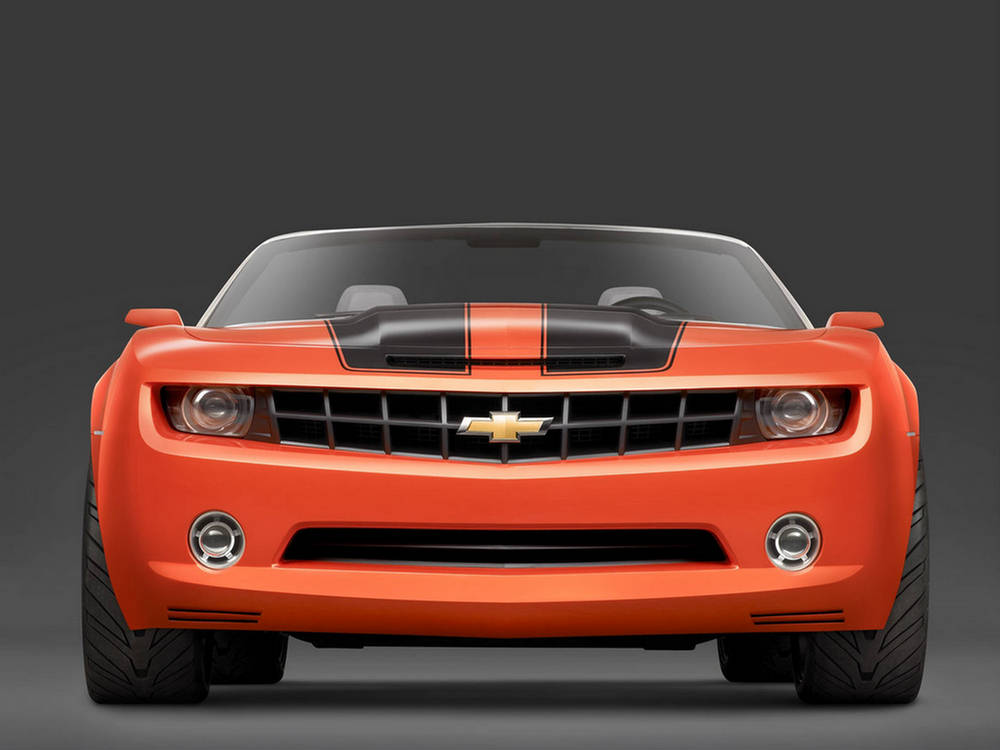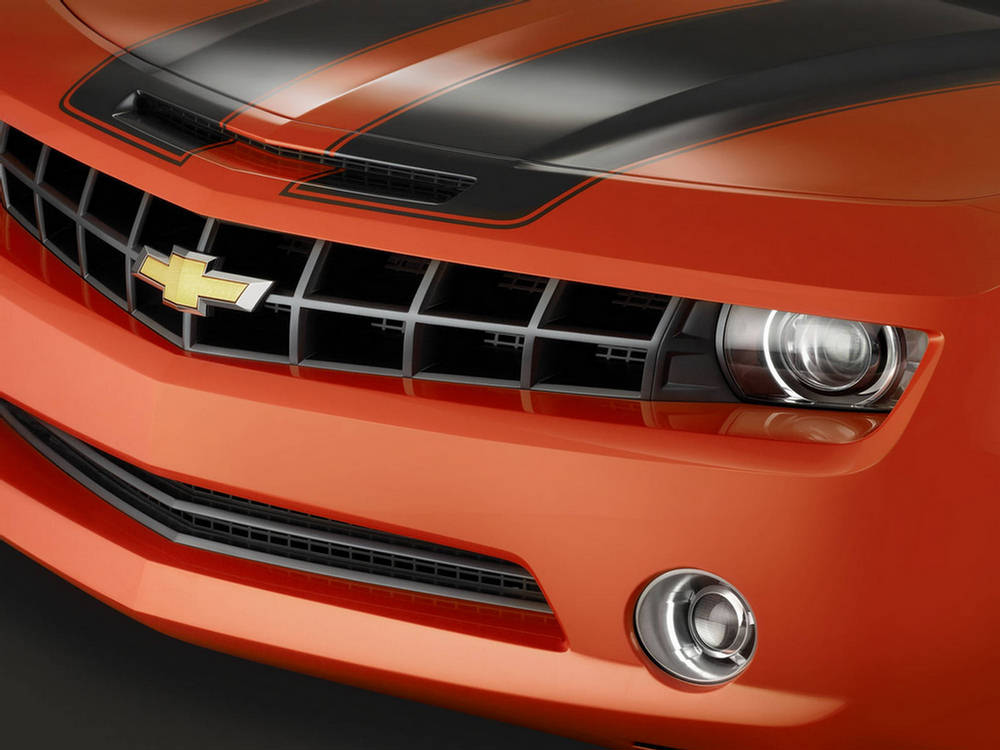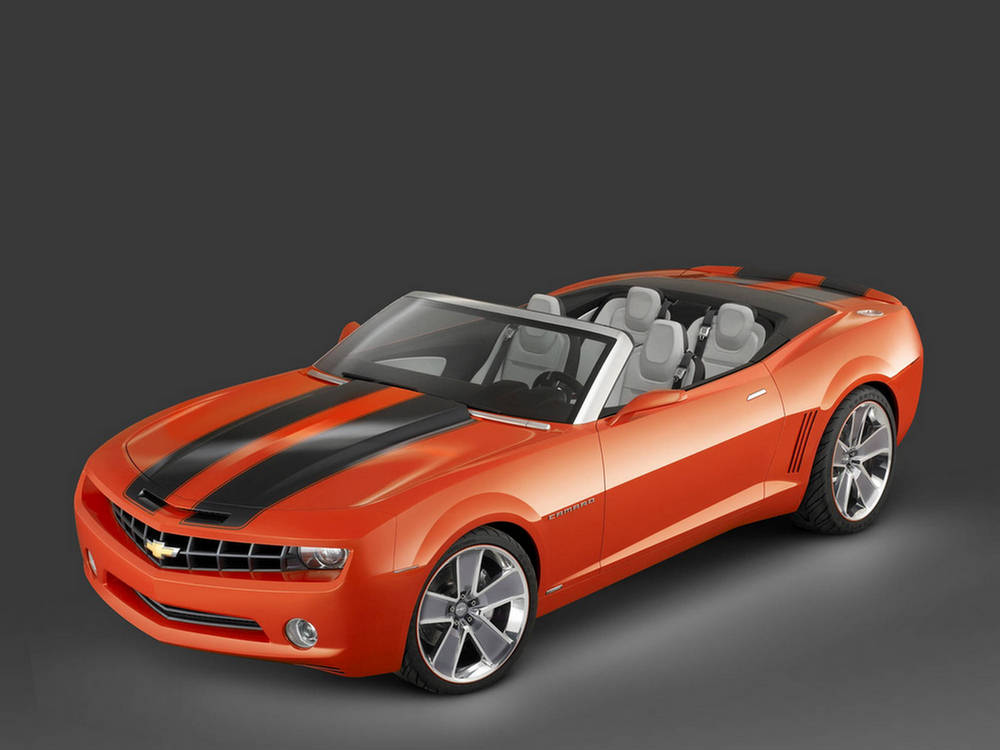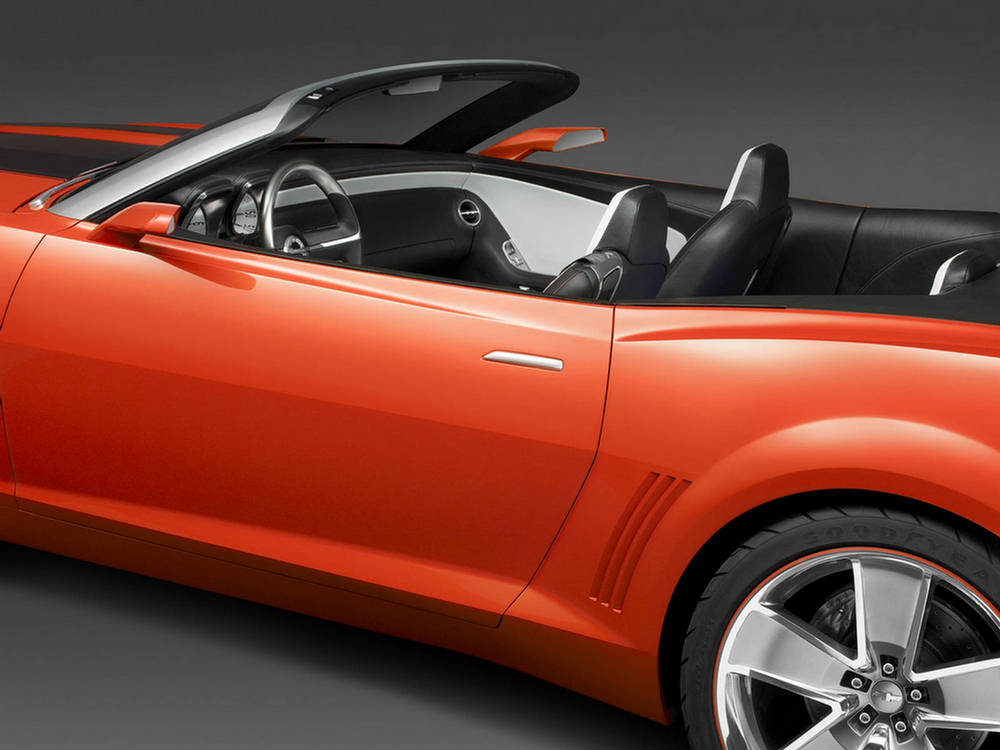
At a glance it would seem that the only difference between the coupe and convertible concepts would be the roof and Hugger Orange pearl tri-coat paint job with a pair of dark gray racing stripes, but this is not the case. Besides the obvious convertible top, there are subtle changes to the exterior as well. Every surface was changed from the door-cut back. The rear fenderlines drop off from the horizontal surface to the vertical surface a couple of inches farther out than on the coupe to keep proportions good and the rear spoiler was reshaped. The 21 in (53 cm) front and 22 in (56 cm) rear wheels were also redesigned and a thin orange line was applied to the outer edge, a nod to redwalls available circa 1969.

There are many interior changes that were incorporated into the new concept. The retro houndstooth-pattern seats of the coupe were replaced with modern leather and orange stitching. The metal finishes, accent panel finishes, and seats are all different colors. The rear seats are 6 in (15 cm) closer together to make room for the tonneau cover. The clarity of the circular gauges in square frames were improved by making the faces white with black chrome numbers and a red anodized needle.
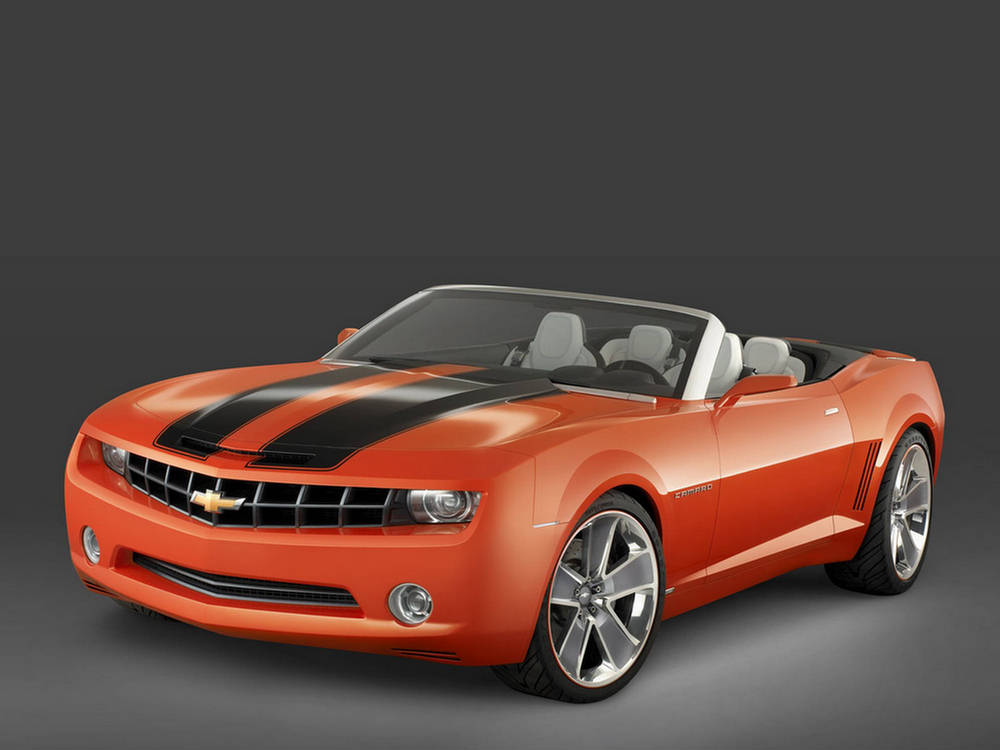
The deep-dish three-spoke steering wheel and four-pack gauge cluster carryover over from the coupe concept. Chrome seat-belt buckles are designed to look like the iconic belts buckles in late 1960s GM cars. This reworked interior of the Camaro Convertible Concept is now a very close representation of what will be seen in the production version of the Camaro.
